
Are phantoms “alive” and walking the streets of Tinseltown and beyond?
Hollywood. Film capital of the world. Haunted Hollywood brings together twenty-five stories that capture both the spirit—and the spirits—of Tinseltown. These tales concern historic landmarks, theaters, watering holes, hotels, and houses that are haunted by movie stars, television personalities, and other celebrities. You will be shivering in your seat as you read about all these and more:
• Film siren Jean Harlow died at only twenty-six, but many believe she’s still “living” in her old home outside Beverly Hills.
• Elke Sommer, the German-born actress and artist, is convinced a ghost saved her life by waking her after her house caught fire. Who’s to say?
• John Wayne has ridden off into the Final Sunset, but he apparently misses his private yacht. He’s been known to come aboard from time to time. . .

When American Cars were a Way of Life
This book will allow you to enter the magical world of the historic American automobile with the aid of outstanding period photographs. Over 450 pages containing more than 600 pictures, selected by the author with informative captions, capturing moments in life associated with cars made in the USA. A fascinating tour using the automobile to illustrate American society, from the ’30s to the end of the ’70s, creating an exciting and unforgettable journey through time. A picture is worth a thousand words. With this in mind, this book illustrates an unforgettable bygone age. Retro Graphic will immerse you in the greatest history of the American automobile, from the 1930s to the end of the ’70s, with fascinating and previously unpublished photographs of the era. Retro Graphic is much more than simply a collection of photos, it is an atrtistic fresco of the US automobile seen through society at the time. A picturesque historical trip through the last century, which thanks to American cars has been impressed on our collective memories. When Detroit was known as the centre of the world, the American automobile was a way of life. A time when the car was a triumph of human style and design. When it was part of the choreography of the city streets and the landscape. When it became the indispensable co-star in films of the era. The American automobile: when it was an iconic companion through every stage of life. Title: RETRO GRAPHIC Dimensions: 24,5×30,5 cm Text: English and Italian Author: Gian Paolo Varetto Editor: Edizioni GP Pages: 450 Photos: over 600 b/w and colour Publication

In 1953, Robert Straub set off for a year’s study abroad in France. Already interested in cars and their designs (he was later to become a designer for General Motors) he took hundreds of snapshots of exotic (to him) cars on the streets. By the time he returned to France a decade later, nearly all the cars he had seen previously had disappeared due to stringent post-WW II taxes. Bob Straub’s evocative photographs of these classicsDelahayes, Delages, Bugattis, Tatras, Hotchkiss’, Rosengarts, Hispano Suiza’s, to name a few, are the substance of this book along with his entertaining and informative narrative. 120 plates.

The rise of the American diner is the most savory of phenomenons, where classic architecture, a friendly face behind the counter, and some mean pie all combined to make these little roadside stops a treasured part of history.
From the early days when Walter Scott brought his horse-drawn lunch wagons through the streets to the heyday of mass-produced chrome and neon diners in the 1950s, The American Diner offers a full blue-plate special of nostalgia for all those who loved the counter culture of these great eateries.
More than 250 historical and bright colorful photographs help remind us of life before fast food, and generous helpings of classic advertisements, cool collectibles, and architectural highlights also highlight the era.
Diners from coast to coast are featured, giving readers a trip to some of the best stainless-steel and neon diners that still dot the American roadways.

Whether it’s a new Formula One V10 wailing at almost 20,000rpm or the metallic howl of a classic V12, there is nothing on earth like the sound of a racing car at full speed – and if it’s a bright red Ferrari screaming by flat-out, then so much the better.
“Red Noise” has been produced by broadcast audio specialists to bring those sounds right into your living room, your car or your stereo headphones. It utilises incredible recordings made in areas that the general public can never hope to reach….with microphones mounted on the trackside guard rails, and even from right inside the famous Monaco tunnel!
Listen to the sounds of Ferraris, Maseratis and Alfa Romeos spanning more than 75 years of motor racing history and featuring the world’s most famous Grand Prix cars.
This is a genuinely unique aural experience, so push the ‘play’ button, close your eyes and let your imagination and “Red Noise” take you right to the trackside.
Ferraris – Old and New1. See Red, Hear Red! The Vintage Sports Car Club stages an annual meeting at Donington Park that is themed around Italian racing cars. ‘See Red’ is the name of the VSCC meeting and we went there to give you the chance to ‘Hear Red’ ! First there’s the harsh engine notes of a 1980 Ferrari 312T5 ‘flat-12’ (a car actually driven by Gilles Villeneuve!) This is followed by an ex-Michael Schumacher team car from 2002 which we hear idling, picking up the revs, warming up, then finally pulling out of the pits with that distinctive V10 howl.
2. Monaco Ferrari Parade There was a fantastic gathering of Ferraris at the Monaco Historic Grand Prix in 2004. We were there to record all those incredible sounds! Cars ranged from the very first Type 125 1500cc supercharged GP car as driven by Alberto Ascari to a 21st-century Schumacher V10. In fact, there were no less than five vee-tens on hand – two Eddie Irvine cars from 1997 and three Schumacher cars from 1998/99 and 2000.
3. Picking up the Pace More from La Piscine as the real demonstration got under way and the cars picked up to racing speeds. No wonder the Italian commentator was getting excited!
4. Old and New in Action Old and new cars take La Piscine en masse. The field includes both four-cylinder and V12 cars from the ‘fifties, a 3-litre Type 312 V12 from 1968 and no less than seven Type 312 flat-twelve ‘boxer’ engine cars. From more recent times there were V12s as driven by Michele Alboreto in 1987, Nigel Mansell in 1990 and Alain Prost in 1991. And last, but very far from least, were the five Irvine and Schumacher vee-tens! They all mean music to the ears of the ‘Ferraristi’….
5. More from Monaco More ‘red noise’ from the Monaco 2004 Ferrari tribute high-speed demonstration laps. Similar to the previous tracks but too good to waste – especially as we were recording with microphones actually right on the Monaco trackside guard rails!
6. Flat-Out Red! And now for a change of recording point – here are Ferraris- old and new – passing at speed on the Monaco start/finish straight.
7. Generations Apart A 1999 ex-Schumacher Ferrari V10 takes La Piscine in conjunction with a rear-engined Ferrari 246 ‘Dino’ V6 that Italy’s Lorenzo Bandini took to second place here at Monaco in 1966. Then comes a 2.5 litre Ferrari Type 625 – the car that Frenchman, Maurice Trintignant, won Monaco with in 1955. The old front-engined ‘four’ takes La Piscine in conjunction with another modern Ferrari V10.
8. The Ferrari Type 312 V12 Sit back and listen to the first Ferrari Type 312 warming up and blasting through the Monaco tunnel.
9. Jackie Ickx Remembers Belgian Grand Prix and Le Mans star, Jackie Ickx, was a young Ferrari driver in the early nineteen-seventies. He remembers those times for us and tells us what it was like to race at Monaco back then.
10. Flat-Twelve Ferraris Not until Ferrari re-designed its 3-litre V12 did they start scoring World Championship successes again. It powered Niki Lauda to world titles in 1975 and 1977, as well as Jody Scheckter in 1979. The engine had a distinctly harsh note. We hear it warming up at Monaco, then making several echoing passes through the Monaco tunnel and, finally, negotiating the La Piscine sequence of tight turns.
11. The ‘Other Flat-Twelve’ There was another ‘flat-twelve’ built in Italy during the seventies, this one by the Alfa Romeo team in Milan. This is what that car would have sounded like back then, warming up and then blasting off, flat-out.
12. The Last F1 Vee-Twelves Ferrari stuck with V12 engine power right through the mid-nineties with Frenchman, Jean Alesi and Austria’s Gerhardt Berger driving the Type 412 team cars until the end of the 1995 season. By then, it was obvious that the V10 layout was definitely the most efficient of all of the Formula One options. Even so, the heavier, longer V12 took the 412 to a number of GP wins – and it sounded great in the process!
13. Into the 21st Century This is the unmistakable sound of V10-powered Ferraris howling by our microphones on the trackside barriers. First we hear some individual passes, then a whole group of vee-tens finish the track. These are all cars driven by either Michael Schumacher or Eddie Irvine between 1997 and 2000.
Maserati from Modena
14. Vintage Red Maserati is one of the oldest names in motorsport. Listen to a couple of vintage Maserati racers warming up – a four-cylinder 4CLM from 1939 and a six-cylinder 6CM from the 1937 season. These supercharged 1500cc cars would have raced in the ‘voiturette’ class – the nineteen-thirties equivalent of the Formula Two (or GP2) category.
15. A Fifties Favourite The six-cylinder Maserati 250F was one of the favourite 2.5 litre Formula One cars of the fifties – both with the fans and with its drivers. Listen to a group of them fire up, pull out of pits and then pass by on a flying lap.
16. Maseratis En Masse! A full field of twenty cars in a ‘Maserati-only’ race at the Vintage Sports Car Club’s ‘See Red’ event at Donington Park. They range from pre-war four, six and eight-cylinder supercharged cars to a whole pack of what is one of the most-admired Grand Prix cars of all time, the six-cylinder Maserati 250F. Hear them on the parade lap, and in race action through Redgate Corner.
17. Maserati at Monaco The throaty sound of a six-cylinder Maserati 250F as it warms up, followed by the rumble and the roar of a full field of ‘fifties Formula One cars on their warm-up lap.
18. Monaco Shark Hunt! The three-pronged trident is famous as the weapon of Neptune, or Poseidon – the God of the Sea and it has also always been the emblem of Maserati. So it’s perhaps appropriate that we hear a pack of 250F Maseratis chasing a Ferrari Type 555 ‘Squalo’ – or ‘Shark’ through the tight left-hander before Monaco’s Rascasse hairpin.
19. GP Rivals Warm Up A Bugatti Type 35 warms up in the Monaco pits. It carries the racing blue of France where the cars were built. Then an Alfa Romeo P3 is push-started into life and joins the mechanical chorus.
20. Right on the Rail! A full field of more than thirty great cars of ‘the golden age’ rumble around on a warm-up lap, take the start and attack the opening laps of a race around the Monaco streets. You are right up with the action thanks to our stereo microphones positioned right on the trackside safety barriers.
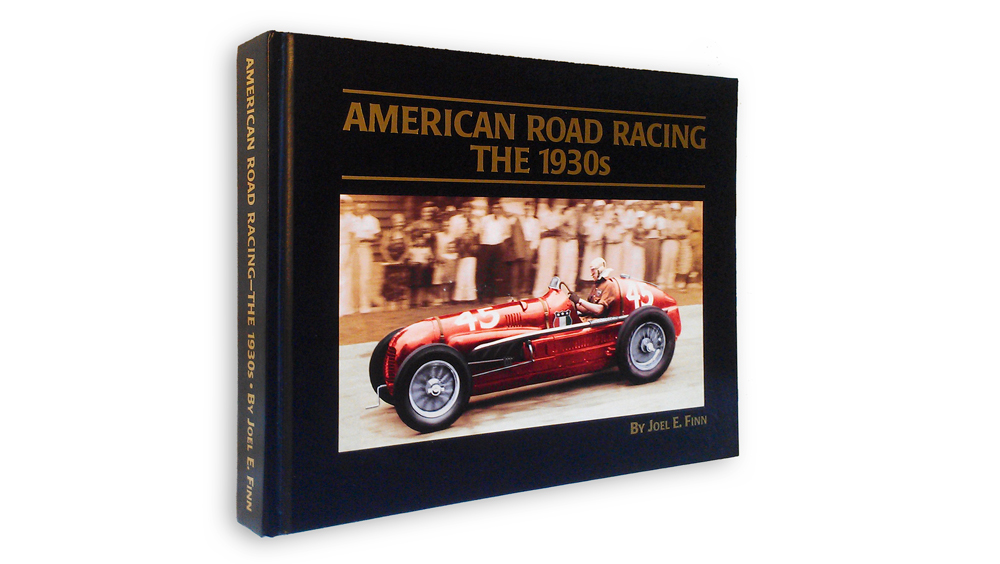
Road racing in the United States was born in the early 1930s with the founding of the Automobile Racing Club of America (ARCA). By the late 1930s the crude, home built jalopies racing on back yard dirt tracks, had given way to events that featured some of the finest examples of European thoroughbred automobiles racing on public streets and roads across America. Packed with more than 600 rare period photographs and illustrations, this tome by historian, author and racer Joel Finn is based largely on original documents from the archives of the Automobile Racing Club of America and lengthy interviews with its members and active participants in the sport.
With more than 600 rare period photographs and illustrations, 400pp, large format, and hard-bound cover, this is Joel Finn’s acclaimed history of road racing in the United States during the 1930s.

A Celebration of Beetle Culture
For everyone who ever drove one, crammed into one, or plays Punch Buggy when one drives by, here comes The Volkswagen Bug Book. Filled with 200 color and black-and-white photos of everybody’s favorite car, The Bug Book is a high-design trip back to when Beetles filled the highways, Flower Children roamed the streets, and Love and Bug were forever linked. Author Dan Ouellette combed the archives of the official Volkswagen museum in Wolfsburg, Germany, for the best historical photos. Back home, Ouellette collected photographs of the most remarkable vintage VWs in the country as well as some less than pristine but nevertheless lovable models. The Bug Book is filled with personal anecdotes, detailed history and little known facts about the German car that zoomed into America’s heart. For new Bug owners, there’s a chapter devoted to Bug 2.0 and how it grew. It’s the collector’s most comprehensive Beetle book yet, and for everyone else, it’s the book that coffee tables can’t resist.
In the summer of 2003, the last original Beetle rolled off the assembly line in Puebla, Mexico and an era ended. In fact, author Dan Ouellette was featured at the time on The Connection with host Michael Goldfarb on WBUR/Boston. But like the car it celebrates, The Volkswagen Bug Book isn’t going to fade away — it has gained a new life, in an updated paperbound edition.
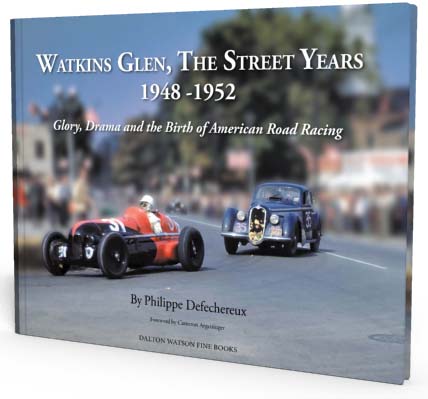
In 1948 Watkins Glen staged the first official American race for sports cars since the Vanderbilt Cup races of the early years of the century. This book is about the transformation of post-World War II racing in America and how road racing became a leading sport in the US, beginning at Watkins Glen and followed by Sebring, Daytona, Laguna Seca and other circuits.
These historic first five years are fundamental to road racing in America when the race was staged through the village streets and neighboring countryside until a permanent track was built in 1953. The races introduced famous international marques such as Ferrari, Jaguar, Porsche, Allard, Healey and Cunningham and encouraged a pantheon of great drivers to develop, among them, Briggs Cunningham, John Fitch, Phil Walters, Phil Hill, Jim Kimberly and Walt Hansgen. Later, from 1961 to 1980, Watkins Glen was the site of the Formula 1 United States Grand Prix.
Cameron Argetsinger, a lawyer and leader in upstate New York, was the man with the dream and the story of how he made it all happen against enormous odds is told in detail. It includes anecdotes and interviews contributed by many of the early participants, and has exclusive color photographs taken during years when color photography was practically unknown.
In 2011, Watkins Glen celebrates the 50th anniversary of its first Formula 1 Grand Prix. Had the early Sports Car Grand Prix of 1948-52 not taken place and quickly become a huge popular success, Watkins Glen would long ago have disappeared in the annals of history. Instead, it remains to this day a challenging race track, with two nationally televised events each year, and it is the home of the world’s first Motor Racing Research Library.
Over 300 photographs provide vivid and fascinating illustrations of the men and machines who threaded together every part of this extraordinary story. Full race results and statistics for all entrants in the 13 races run between 1948 and 1952 are also provided in detail. A final chapter shows how many of the race cars from the early years are now highly valued and are prize-winners at concours events.
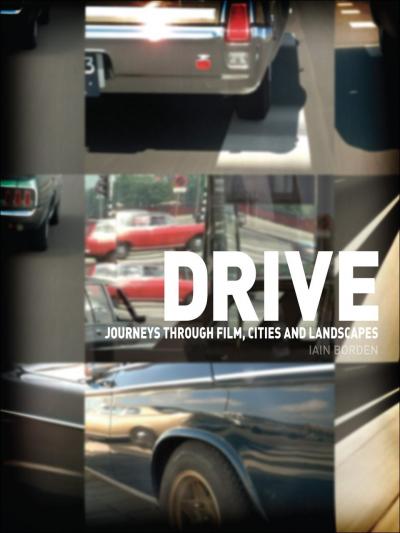
““The open road”—it’s a phrase that calls to mind a sense of freedom, adventure, and new possibilities that make driving one of our most liberating activities. In Drive, Iain Borden explores the way driving allows us to encounter landscapes and cities around the world. He takes particular notice of how driving is portrayed in film from America to Europe to Asia and from Hollywood to the avant-garde, covering over a century of history and referencing hundreds of movies.
From the dusty landscapes of The Grapes of Wrath to the city streets of The Italian Job; from the aesthetic delights of Rain Man and Traffic to the existential musings of Thelma and Louise and Vanishing Point;from the freeway pleasures of Radio On and London Orbital to the high-speed dangers of Crash, Bullitt, and C’était un Rendezvous; this book shows how driving with different speeds, cars, roads, and cities provides experiences and challenges beyond compare. Borden concludes that as an integral part of modern life, car driving is something to be celebrated and even encouraged, making Drive a timely riposte to anti-car attitudes, and those blind to the richness of life behind the wheel.
”
Los Angeles Califonria
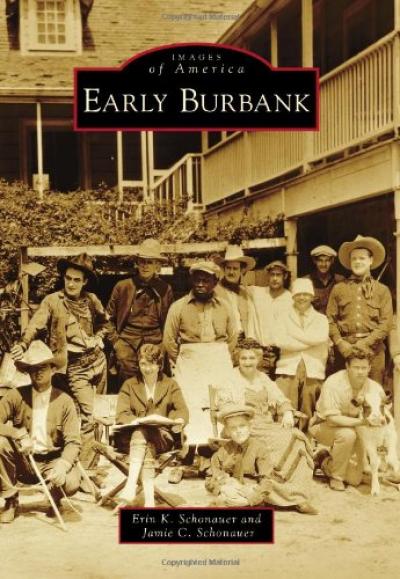
Burbank is an innovator, a world traveler a city with artistic flair and creativity. From the entertainment industry taking up residence in the early 20th century to the Lockheed Aircraft Company opening shop in 1928, Burbank’s masterpieces have transcended the coasts. Films shot on Burbank back lots and streets have entertained audiences worldwide. Lockheed planes built on Burbank soil flew across the world with the likes of Amelia Earhart and Charles Lindbergh. Once a robust farming community, Burbank, founded on May 1, 1887, and later incorporated as a city on July 8, 1911, dons its name from Dr. David Burbank, a New Hampshire born dentist who, in 1867, bought over 9,000 acres of land amid the sun-kissed foothills of the Verdugo Mountains land that was awaiting creative cultivation.

Architect John Parkinson died in 1935, and the Los Angeles Times praised him: “Future generations have only to walk through the streets of Los Angeles to be reminded how much John Parkinson in his lifetime contributed to the city that grew up under his hand.” In Iconic Vision: John Parkinson, Architect of Los Angeles, author Stephen Gee proves that this singular visionary created the look of America’s most dynamic metropolis, long before the world recognized the city’s importance. Consider that among more than four hundred buildings in the City of Angels that carried his architectural imprimatur, John Parkinson designed:
- Los Angeles City Hall, the most iconic building in California, the tower that changed a futuristic city’s skyline forever;
- Bullock’s Wilshire, the towering structure that rivals the Chrysler Building as America’s premier Art Deco edifice;
- Los Angeles Memorial Coliseum, the world’s only modern stadium to host two Olympic Games, 1932 and 1984–and still home to the USC Trojans;
- Los Angeles Union Station, the Mission-Moderne-Art Deco masterpiece that brought together California’s railroads and became a legend before the first trains roared in.
Iconic Vision, the first biography of the master architect, documents–in remarkable detail and images–Parkinson’s monumental contributions to the city he loved. Although other architects’ names have become synonymous with the city, John Parkinson designed more landmark buildings in Los Angeles than any other architect, living or dead. And, while other architects may have taken credit for Parkinson’s designs, Stephen Gee’s penetrating biography establishes the truth. He tells the story of a man who envisioned tomorrow.
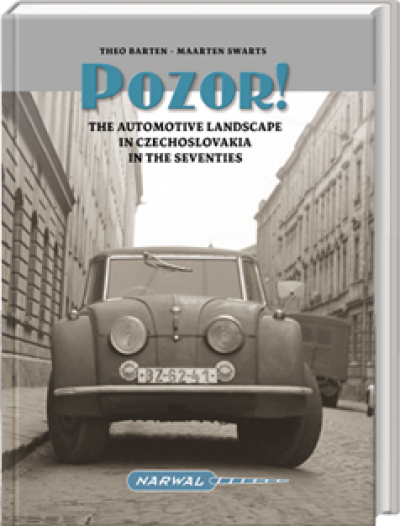
In the early seventies the authors (professional photographers) visited Czechoslovakia in search of classic cars in their twilight years. What they found on the streets of Prague and other cities was forty years of automotive history. Private cars of various origins were kept on the road until their last breath. In the thirties Czechoslovakia was an industrialized country with an innovative automobile industry. Many of these prewar cars were still to be found on the streets in the nineteen seventies.
In addition to the Czech cars many examples of other European, Russian and even American cars were seen.
Hard cover, Over 125 high quality photos in sepia tones.

This book is dedicated to the Soviet Space Dogs, who played a crucial part in the Soviet Space program. These homeless dogs, plucked from the streets of Moscow, were selected because they fitted the program’s criteria: weighing no more than 15 pounds, measuring no more than 14 inches in length, robust, photogenic and with a calm temperament. These characteristics enabled the dogs to withstand the extensive training that was needed to prepare them for suborbital, then for orbital, space fights. On 3 November 1957, the dog Laika was the first Earth-born creature to enter space, making her instantly famous around the world. She did not return. Her death, a few hours after launching, transformed her into a legendary symbol of sacrifice. Two further strays, Belka and Strelka, were the first beings to make it back from space, and were swiftly immortalized in children’s books and cartoons. Images of the Space Dogs proliferated, reproduced on everyday goods across the Soviet Union: cigarette packets, tins of sweets, badges, stamps and postcards all bore their likenesses. Soviet Space Dogs uses these unique items to illustrate the story (in fact and fiction) of how they became fairytale idols. The first book to document these items, it contains more than 350 images, almost all of which are previously unpublished, and many of which have never been seen before outside Russia. The rich and varied ephemera (from cigarette packets to sweet wrappers and children’s toys) of Soviet graphics will have immense appeal to the art and design market, as well as appealing to dog-lovers everywhere.
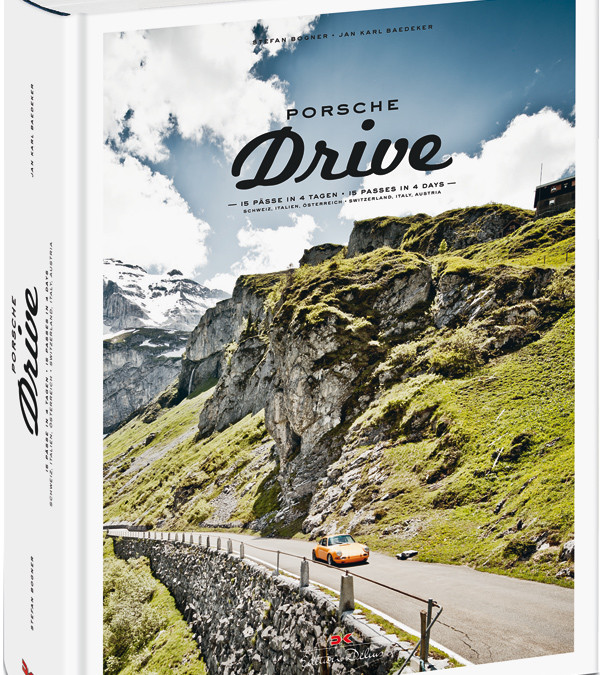
After his last book „Escapes“, Stefan Bogner returns to the Alps again with this illustrated book. This time he did not only photograph particular routes, but he looked for the ideal tour through the Alps: 3 countries, 15 passes – the perfect little escape for 4 days.
Different from Bogner’s photographs in „Escapes“ or „CURVES“, where Bogner just presents dreamlike empty streets, „Porsche Drive“ focuses on the journey in Porsche models like Porsche 906, Porsche 911, Porsche 918 and more. Stefan Bogner drives his own Porsche 911 1970 ST.
Apart from Bogner‘s photographs, „Porsche Drive“ offers information on each route and height profile. Thus you can follow Bogner‘s itinerary on a long weekend.
Hard Cover 432 pages
Autobooks-Aerobooks 2900 W. Magnolia Blvd. Burbank, CA 91505 (818) 845-0707 Hours: Tuesday-Friday 10:00 AM – 6:00 PM Saturday 10:00 AM – 6:00 PM Closed Sunday and Monday Accept Credit Cards gift cardYES, We have Gift Cards - Click Here AUTOBOOKS IS OPEN...
















